- Introduction to vehicle borne threats
- What is hostile vehicle mitigation?
- Operational requirement
- Standards, testing and products
- Design
- Build
- Operate
- Public realm integration
- Mitigating the risk to high streets
- Anti-Terrorism Traffic Regulation Order
- Vulnerability of rising arm and swing arm barriers
Hostile Vehicle Mitigation Video
Hostile Vehicle Mitigation puts a protective barrier around your site protecting you, your people and your infrastructure.

Introduction to vehicle borne threats
Vehicle borne threats range from vandalism to sophisticated or aggressive attack by terrorists or determined criminals. Vehicles (such as cars, vans and lorries) are widely available and terrorists have previously gained access to them through a number of means:
- Owned a vehicle is under the attacker's possession
- Borrowed a vehicle is lent by an unwitting or complicit associate
- Leased a vehicle is hired from a company, using real or fake documentation
- Stolen a stationary, unattended (locked or keys in ignition) vehicle is taken
- Hijacked an occupied vehicle, parked inside or outside a protected area, is seized.
Terrorists use vehicles in three main ways to enable an attack:
Vehicle Borne Improvised Explosive Device (VBIED)
Vehicle As a Weapon (VAW)
Layered Attack Vehicle - transporting attackers and / or weapons
- Traverse over green spaces such as fields, recreational ground, parks
- Park illegally
- Ignore traffic signals
- Drive at speed
- Drive on the wrong side of the road
- Mount footways
- Enter pedestrianised zones.
Vehicle Borne Improvised Explosive Device (VBIED)
An improvised explosive device is either visible or concealed within a vehicle and transported to target.
The effects from a VBIED detonation include the blast, fireball, primary & secondary fragmentation and ground shock.
The blast stand-off (the distance between the device and the asset) is the most important factor in determining the extent of damage that can be caused. Maximising the blast stand-off distance will reduce the damage sustained to the asset.

Vehicle As a Weapon (VAW)
Deliberately driving a vehicle:
- at an individual or into crowds of people to cause harm; or
- deliberately driving a vehicle into infrastructure to damage or disrupt its operation. This may indirectly lead to harm to people or disruption to the operation of a site/event, or more widely, critical services or supplies.
Driving a vehicle into crowds is regarded by terrorists as attractive because it is likely to cause multiple casualties, is low complexity, affordable, requires little planning and skill and is perceived as less likely to be detected in the planning phase.
VAW attacks are frequently the first part of a Layered Attack. The attacks frequently begin on public roads with little or no warning and are often followed by a marauding attack using bladed weapons, firearms or fire as a weapon.

Layered Attack Vehicle - transporting attackers and / or weapons
A layered attack is a combination of attack types.
The vehicle may:
- facilitate the delivery of armed attackers, either covertly or overtly; or
- be combined with a VBIED or VAW attack

There are seven exploits terrorists will use to overcome operational and/or physical security measures
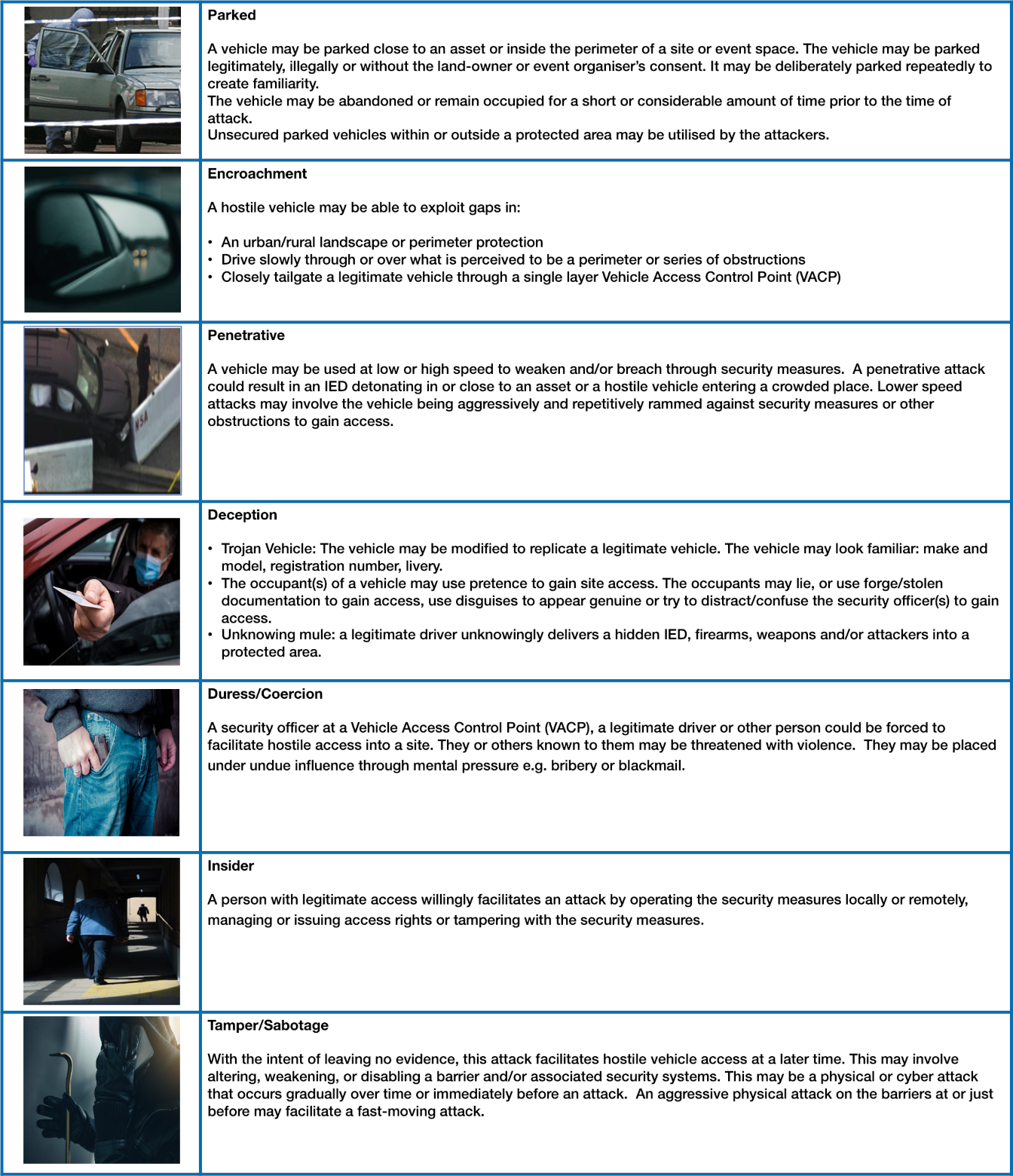
What is hostile vehicle mitigation?
Hostile Vehicle Mitigation (HVM) is a protective security discipline focussing on reducing risks associated with vehicle borne threats posed by terrorists and criminals. HVM is the delivery of measures that are informed by the threat and how it manifests itself, the multiple consequences of an attack, the vulnerability of a given location and the needs of the enterprise requiring protection. The basis of HVM are security risk assessments, security planning, and design and the deployment of risk-based measures.
Hostile vehicle mitigation measures
HVM measures are the integrated deployment of security processes, procedures and physical obstructions to counter vehicle borne threats. They typically include; deterrent communications, security awareness, incident response planning and training, operational security, traffic management and the deployment of physical obstructions such as vehicle security barriers and traffic calming measures.
A VSB is a product designed to prevent vehicle access. It has undergone testing at an independent and accredited test house, to a recognised vehicle impact test standard and achieved a performance rating in accordance with that standard.
Vehicle barriers are typically products designed to prevent vehicle access by compliant drivers or occupants. They cannot be relied upon to prevent hostile vehicle access.
It is important to be clear about the vehicle borne threats of concern and how those might manifest themselves, including the potential exploit techniques. Having carried out a security risk assessment, security professionals should produce HVM Operational Requirements. The Operational Requirements process will help draw out many of the key points to consider and how to prioritise the mitigation measures.
Operational requirement
How do I assess the strengths and vulnerabilities of my site to vehicle-borne threats?
Once the nature of threat is understood, practitioners should take a methodical and considered approach to determine project objectives and highlight security vulnerabilities:
- Develop detailed security requirements for HVM - Operational Requirements (OR)
- User Requirement Document (URD) if not covered in the detailed requirements - addressing additional business needs e.g. stakeholder liaison, planning and design
- Practical site assessment - a detailed review of vulnerabilities and opportunities in the environment, operational and physical security measures.
- Technical assessment - e.g. Vehicle Dynamics Assessment (VDA) at specific locations based on the relevant threat vehicle(s)
- Liaison with technical or security experts - e.g. NPSA or CTSAs, or RSES professionals with relevant experience.
Based on the project objectives and site assessment, a range of options can be incorporated into the design of a robust HVM strategy:
- Principles of hostile vehicle mitigation - determine the aims of the HVM strategy and how it will integrate with other site security measures.
- Traffic calming - can be used to limit vehicle approach speeds to a manageable level.
- Vehicle Security Barriers (VSB) - provide proven vehicle impact protection and maintain blast stand-off.
- Traffic management - when and how legitimate traffic will access the site.
- Vehicle access control - consider deployment of active VSB solutions, access procedures, long term operational management and emergency access.
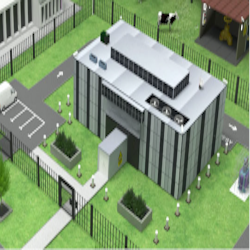
NPSA recommends a full range of potential threat vehicles and attack methodologies (including a range of impact speeds) are considered when developing HVM Operational Requirements

This scoping document can be used by customers seeking proposals from potential Vehicle Security Barrier (VSB) suppliers

Guidance on aspects of sourcing, procuring, tasking and retaining specialist security consultants
Standards, testing and products
What vehicle impact test standards should I be using?
NPSA recommend that a barrier deployed for the purposes of countering terrorism to protect assets against vehicle-borne threats should be a 'Rated Vehicle Security Barrier' that has undergone formal vehicle impact testing. The testing should:
- be conducted to a recognised vehicle impact test standard
- be performed at an independent test house
- achieve a performance rating in accordance with the chosen standard
NPSA have also developed an additional standard for testing: Vehicle Attack Delay Standard (VADS). VADS provides a means for testing Vehicle Security Barriers (VSBs) against aggressive and repetitive vehicle impacts. Learn more here.
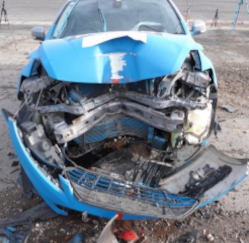
For security practitioners and manufacturers, this summarises technical changes to the new industry standard for vehicle impact testing of vehicle security barriers.
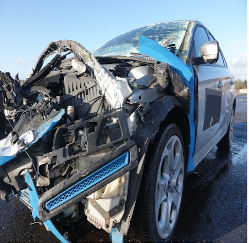
Guidance for security professionals and specifiers of Vehicle Security Barriers (VSBs), to provide clarity and answer recurring queries that circulate across the industry

Document highlights the main differences between vehicle security barriers and road safety barriers

Impact rated vehicle security barriers that have been tested to publicly available vehicle impact test standards

NPSA VADS rated Vehicle Security Barriers against aggressive and repetitive vehicle impacts.

Guidance note on the design and vehicle impact performance of ditches, bunds & trees

HVM guidance note on the differences between and the most appropriate use of vehicle impact testing and computational analysis (Finite Element Analysis)

PAS 29000:2021, sponsored by DfT and NPSA , has been developed to mitigate the risk of malicious use of commercial vehicles. It sets out a raft of security measures for operators, to prevent criminals and terrorists from accessing commercial vehicles. It compliments Government best practice guidance for goods vehicle operators and drivers.

When installing VSBs with concrete foundations, in addition to considering the specification of the concrete, the curing environment must also be considered

Summary guidance note provides advice and considerations on determining the soil conditions when testing VSBs installed in soil
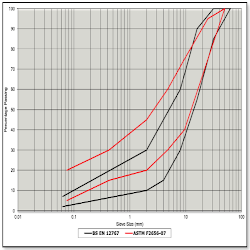
Full report on advice and considerations on determining the soil conditions when testing VSBs installed in soil
Design
A HVM scheme needs to be designed before it is installed. Implementing the Operational Requirements into a scheme design will increase the likelihood of it mitigating the vehicle threat and it being incorporated into the site or event's normal operations.
Understanding the capabilities and limitations of individual products and schemes is vital before they are procured. This includes ensuring they are installed correctly, to maximise the vehicle resistance, and making them intuitive to operate; this will make them safer and more secure.

Provides clarity and answers to recurring queries that circulate across the industry
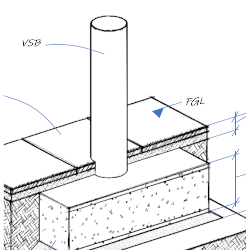
Document highlights to security managers and specifiers the design terminology and considerations when installing Vehicle Security Barriers (VSBs)
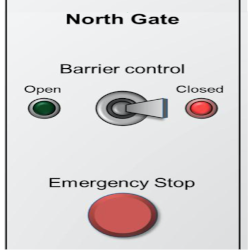
Document focuses on the design aspects of VSB controls; it does NOT include guidance on management or training
Build
Once a scheme design has been completed it is important to ensure it is built as per instruction. This will maximise the vehicle resistance. A poor build phase may create vulnerabilities in the scheme that cannot easily be detected afterwards. Due care and attention must be given during installations to ensure products are not installed incorrectly.

The design of a Vehicle Access Control Point (VACP) should be based on the Operational Requirements (OR) provided by the site owner or operator

When installing VSBs with concrete foundations, in addition to considering the specification of the concrete, the curing environment must also be considered
Operate
When the scheme is up and running it is important to keep it well maintained. Failure to do so will inevitably lead to products breaking down. This will likely impact the operability of the site or event and may create vulnerabilities that can be exploited by a hostile vehicle or make the product dangerous. Regular servicing will flag issues before they turn into serious problems.
Public realm integration
Integration of HVM measures within the public realm is increasingly common and whilst requiring the application of informed design choices meeting the needs of numerous stakeholders, can provide proportionate security measures without impinging on the needs of local businesses or functionality of the public space.
In addition to the publication of a public realm design guide for HVM, NPSA has collaborated with the Department for Transport to produce guidance regarding the incorporation of HVM measures in the public space and specific advice on the use of bollards and their effect on pedestrian movement.
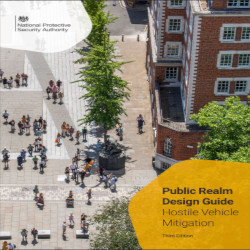
This publication provides information and stimulus to those responsible for integrating hostile vehicle mitigation into the public realm

NPSA have released a newly developed Security Minded Communications (SMC) campaign designed to amplify the deterrent effect of Hostile Vehicle Mitigation (HVM) and other security measures that may feature at your site

This guidance document describes 6 HVM scheme designs that Local & Highway Authorities, public realm designers, developers and security consultants should consider when considering options to protect streets from vehicle borne threats, including Vehicle As a Weapon Attack

These documents provide advice on increasing the protection of crowded places from a terrorist attack

How bollard schemes affect pedestrians, and planning advice to help with installing bollards to reduce vehicle threats
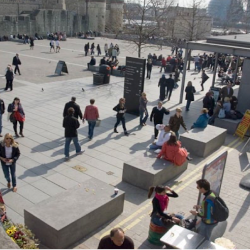
Reasons for and information on how to use vehicle security barriers (VSB) within a streetscape
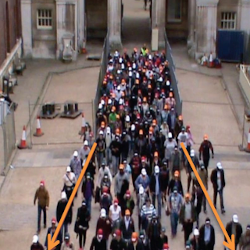
Additional guidance on using bollards as a vehicle security barrier
Mitigating the risk to high streets

The trend towards outdoor dining at commercial premises and public spaces means there is an enduring risk to pedestrians from Vehicle As a Weapon (VAW) attack. Commercial premises and public spaces can take practical steps to reduce the risk.

Guidance intended for authorities who are considering temporarily increasing or expanding pedestrianised spaces to assist businesses with COVID-19 social distancing measures and the revitalisation of high streets. For additional information, please read this blog

Advice note outlines the VAW threat and provides guiding and technical principles on how to reduce the risk to queuing people
Anti-Terrorism Traffic Regulation Order
An ATTRO provides a statutory basis under the Road Traffic Regulation Act 1984 (RTRA) for regulating traffic and implementing physical security measures to:
- avoid or reduce, or reduce the likelihood of, danger connected with terrorism; and
- prevent or reduce damage connected with terrorism, where terrorism is as defined in the Terrorism Act 2000.

ATTROs may be permanent or temporary and can only be made by a traffic authority on the recommendation of a Chief Officer of Police.
- provide for the installation of permanent vehicle control measures;
- provide for the installation of temporary vehicle control measures;
- provide for the installation of permanent vehicle control measures for later use, for example at times of raised threat or for specific events. These measures may include, for example, the installation of rising security bollards around a city centre used only when a secure conference was being hosted, i.e. whilst the bollard installation is permanent, its use is temporary;
- enable the commencement, suspension or resumption of provisions. The provisions also allow for the discretion of a Constable to apply, or not to apply, a provision of an ATTRO;
- prohibit parking on a road, for example near a vulnerable site;
- restrict pedestrian access to premises in roads affected.
In all cases where a recommendation for an ATTRO is to be made, the Chief Officer of Police should seek advice from their Counter Terrorism Security Advisor (CTSA) and major event planner with Hostile Vehicle Mitigation experience.
Early liaison between the police and the traffic authority will help in developing an effective and acceptable proposal that balances the needs of security with the impact on local residents, local businesses and road users.
Vulnerability of rising arm and swing arm barriers

Some rising arm and swing arm Vehicle Security Barriers (VSBs) are vulnerable to impact from smaller cars even though they may be able to stop a larger vehicles travelling at speed.
NPSA recommends that rising & swing arm VSBs deployed to protect assets against vehicle borne threats should be tested and rated to the following standards and include an M1 classification vehicle i.e. passenger car:
- ISO IWA 14-1:2013; and where necessary;
- NPSA's Vehicle Attack Delay Standard (VADS), possibly also with an N1G (4x4) vehicle.
In recent years, vehicle borne threats have evolved to include Vehicle as a Weapon (VAW) attacks, with perpetrators using a wide range of vehicles from passenger cars up to lorries. A number of security related incidents and terrorist attacks have involved or used hatchback and saloon cars to target people or attempt to breach perimeters. Their use remains a realistic possibility.
Consequently, following a programme of research and full scale vehicle impact testing, NPSA recommends a full range of potential threat vehicles and attack methodologies (including a range of impact speeds) are considered when developing HVM Operational Requirements. Assurance should be sought during the tender procurement process that the proposed VSB attained the necessary vehicle impact performance rating/s against your identified vehicle borne threats.
For rising arm and swing arm VSBs already in place, discuss your requirements with the original equipment manufacturer. HVM specialist members of the Register of Security Engineers and Specialists will also be able advise you of specific design features that may need addressing.
Engineered design modifications to barriers should not be implemented without first validating the performance through vehicle impact testing as detailed above.
Additional advice may be sought from:
- Original vehicle security barrier manufacturers
- HVM Specialist Members of the Register of Security Engineers and Specialists
- NPSA Security Advisers
- UK Government Protective Security Advisers
- Police Counter Terrorism Security Advisers (CTSA)

Assurance should be sought during the tender procurement process that the proposed VSB attained the necessary vehicle impact performance rating/s against your identified vehicle borne threats
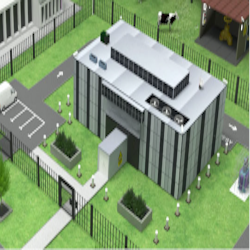
NPSA recommends a full range of potential threat vehicles and attack methodologies (including a range of impact speeds) are considered when developing HVM Operational Requirements
